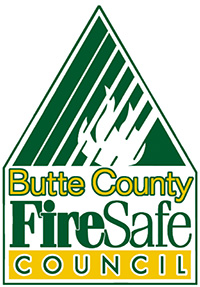What is Defensible Space?
The area of at least 100 feet around our house and other structures in which you’ve modified the landscape to improve the odds for firefighters defending your home. Please note: 100 feet of defensible space is required by California law [PRC4291].
Your “defensible space” is the area that is a minimum of 100 feet from your home (as required under State Public Resources Code 4291 or other local ordinances). This is the area where you’ve modified the landscape to allow your house to survive on its own –greatly improving the odds for the firefighters defending your home.
if your home is on a slope or subject to high winds, extend the distance of this zone based upon the “X-Factor.” for instance, this zone may increase to 150 feet (1.5 x 100 feet).
The three R’s of defensible space.
Remove – dead and dying grass, shrubs and trees.
Reduce – the density of vegetation (fuel) and ladder fuels, those fuels extending from the ground to the tree canopies.
Replace – hazardous vegetation with less flammable, irrigated landscape vegetation including lawn, or other low growing groundcovers and flowering plants.
The Home Ignition Zone (the home plus 10 ft distance)
It’s the ‘little things’ that will endanger your home. Just a little ember landing on a little pile of flammable material will burn it. Spend a morning searching out and getting rid of those flammable little things outside and your home will be much safer.
 |
 |
 |
| 1. Keep your rain gutters and roof clean of all flammable material.2.Get rid of dry grass, brush and other flammable materials around your home –and don’t forget leaves, pine needles and bark walkways. Replace with well maintained (watered) landscape vegetation, green lawn and landscape rocks. | 3. Clear all flammable materials from your deck. This includes brooms, stacked wood and easily ignitable patio furniture. Also enclose or board up the area under your deck to keep it from becoming a fuel bed for hot embers.4. Move woodpiles and garbage cans away from your home. Keep woodpiles away from the home a distance of 2 times the height of the pile –more if lot size allows. | 5. Use fine mesh metal screen (1.4″ or less) to cover eaves, roof and foundation vents to prevent windblown embers from entering.6. Inspect and clean your chimney every year. Trim away branches within 10 feet. install a spark arrester with 1/2″ or smaller mesh screen |


